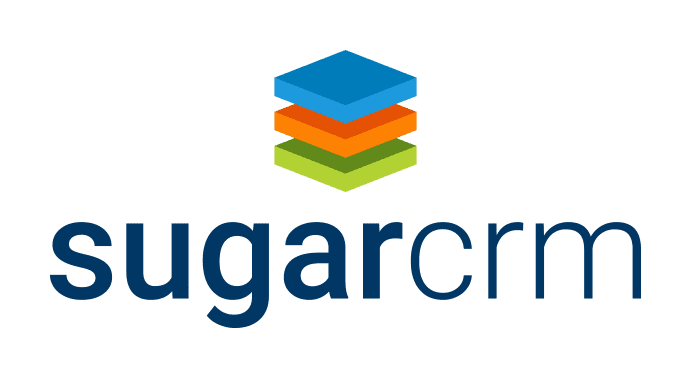Is QuickBooks Holding Your Business Back? Find Out When It’s Time to Upgrade
Accounting software serves as the backbone of an organization, providing crucial support for financial management and decision-making. Oftentimes QuickBooks is the go-to solution for small businesses, especially those just getting started– and it makes sense because QuickBooks is known for its affordability and user-friendly interface, both attractive characteristics for any new business.
But as companies grow and operations become more complex, relying on QuickBooks inevitably results in limitations. And those limitations go beyond financial and force decisions based on partial or outdated information.
Maybe you’re already there. You start to ask questions like:
- What signs indicate your company has outgrown QuickBooks?
- What are the benefits of automation, consolidation, and data visibility?
- What could an anytime, anywhere access cloud-based accounting software do for the company?
Today you’ll get answers to these questions and the guidance you need to determine whether QuickBooks meets your current and future needs and offer insights into replacing manual, Excel-based processes with real-time, custom reports and dashboards.
Ready to Migrate Now? Here are Best Practices for Migrating Data
9 Signs Your Company Has Outgrown QuickBooks
As your business expands and evolves, it is essential to recognize the signs that indicate QuickBooks may no longer be meeting your needs.
Recognizing these signs is essential to determine if it’s time to consider upgrading from QuickBooks to a more comprehensive financial management solution.
What are the signs your company has outgrown QuickBooks software?
- Limited Reporting Capabilities: QuickBooks often struggles to provide advanced reports that compile information from multiple systems, making it difficult to fully understand your financial position and plan effectively for the future.
- Inefficient Reconciliation and Balancing: With increasing transaction volumes and complex financial tracking requirements, QuickBooks’ weak audit trail capabilities can lead to time-consuming reconciliations and potential compliance challenges.
- Data Purging to Maintain System Stability: QuickBooks’ file size limits can result in system instability as your business grows and accumulates more data. To keep the software running smoothly, you may need to purge valuable data, which can negatively impact your decision-making process.
- Inability to Handle Multiple Entities: QuickBooks may need help managing multi-company transactions or consolidating financials, limiting its effectiveness for businesses with multiple divisions or entities.
- Difficulty Managing Multi-Warehouse Operations: For companies with inventory stored in multiple locations, QuickBooks’ limited functionality can make tracking inventory and managing shipment orders challenging.
- Limited User Licenses: As your staff grows, QuickBooks’ limited user licenses can hinder simultaneous access to the software, causing delays and inefficiencies in your financial processes.
- Lack of Integration with Other Business Systems: As your organization adopts new tools and systems to manage various aspects of its operations, QuickBooks’ limited integration capabilities can create data silos, making it challenging to maintain a unified view of your business.
- Insufficient Customization Options: As your company’s needs become more specific and unique, the lack of customization options in QuickBooks can limit your ability to tailor the software to your exact requirements.
- Inadequate Scalability: QuickBooks may not scale with your growing business, leading to performance issues and the need for frequent software upgrades or migrations.
How to Evaluate Your Current and Future Accounting Needs
Many out-of-the-box accounting solutions provide much-needed starter support to young organizations. To ensure any financial software you’re considering is suitable for your organization today and tomorrow, here are some factors to consider:
- Assessing Your Business Growth and Complexity: Consider your company’s growth trajectory and the increasing complexity of your operations. If you anticipate significant expansion or diversification, evaluate whether QuickBooks or similar can handle the additional requirements, such as advanced reporting, multi-currency support, and more extensive integrations.
- Evaluating Your Current Workarounds: Examine the workarounds your team is currently using, such as relying on Excel spreadsheets or manual processes, to compensate for QuickBooks’ limitations. If these workarounds are becoming increasingly cumbersome or time-consuming, it may be time to consider a more robust solution.
- Analyzing User Feedback and Frustrations: Collect feedback from your team members who use QuickBooks regularly. If they express dissatisfaction with the software’s limitations or report that it hinders their productivity, it might be time to explore alternatives.
- Examining Your Reporting and Analytics Needs: Evaluate your organization’s reporting and analytics requirements. If you find yourself struggling to obtain the insights necessary for strategic decision-making, this could be a sign that QuickBooks is no longer meeting your needs.
- Identifying Integration Challenges: Assess the integration capabilities of QuickBooks with your existing systems and software. If you face difficulties integrating QuickBooks with other tools or encounter data silos, it may be time to consider a more comprehensive financial management solution.
Excel Spreadsheets vs. Real-Time, Custom Reports and Dashboards
One of the main reasons companies outgrow QuickBooks is its limited reporting capabilities, often leading to a reliance on Excel for generating complex reports. When you upgrade to a more advanced financial solution, you replace Excel-based processes with real-time, custom reports and dashboards.
Here’s how:
- Comprehensive Reporting: A robust financial management system offers a wide range of pre-built reports and the ability to create custom reports tailored to your organization’s specific needs. This enables you to access accurate, real-time information without relying on manual Excel processes.
- Intuitive Dashboards: Advanced financial management solutions provide user-friendly, customizable dashboards that display key performance indicators (KPIs) and essential financial data, enabling easy monitoring of organizational financial health and improved decision-making based on real-time data.
- Automation: By automating data entry and eliminating the need for manual data manipulation in Excel, a comprehensive financial management system can significantly reduce the risk of errors and improve efficiency, saving time and ensuring reports are accurate and up-to-date.
- Streamlined Workflows: Advanced financial solutions enable streamlined workflows, allowing users to create and share reports more efficiently, reducing the time spent on manual tasks, such as data entry or report generation, and allowing your team to focus on more strategic activities.
- Collaboration: Real-time reports and dashboards make it easier for teams to collaborate and share information, facilitating better communication and decision-making across the organization. By replacing Excel-based processes with a centralized, cloud-based solution, you can ensure that everyone has access to the most up-to-date information.
Replace Excel-based processes with real-time, custom reports and dashboards and get valuable insights and improve overall efficiency.
Evaluating new software? Check out these 8 tips first
Achieving Anytime, Anywhere Access to Finances
As your organization continues to grow and evolve, having anytime, anywhere access to your financial information becomes increasingly important. Sage Intacct, a leading cloud-based financial management solution, offers several advantages over QuickBooks.
Sage Intacct can help you achieve real-time access to financial data from anywhere.
Here’s how:
- Cloud-Based Platform: Sage Intacct is a true cloud-based financial management solution that allows you to access your financial data securely from any device with an internet connection. This enables your team to work remotely and access financial information on-the-go, promoting flexibility and efficiency.
- Role-Based Access Controls: Sage Intacct’s role-based access controls ensure that your team members can access only the financial information they need to perform their tasks. This only improves security and streamlines workflows by presenting relevant data to each user.
- Real-Time Visibility: With Sage Intacct, you get real-time visibility into your financial data, allowing you to make informed decisions based on up-to-date information. This eliminates the need for manual data synchronization or waiting for month-end reports, enabling a more proactive approach to financial management.
- Integration with Other Business Applications: Sage Intacct easily integrates with various other business applications, such as CRM, HR, and payroll systems. This seamless integration allows for a unified view of your organization’s financial data and helps you gain valuable insights across multiple aspects of your business.
- Scalability: Sage Intacct’s cloud-based platform is designed to scale with your business, ensuring that your financial management needs are met as your organization grows. This allows you to continue leveraging the benefits of Sage Intacct without worrying about outgrowing the system or needing to switch to another solution.
Recognizing when your organization has outgrown QuickBooks is crucial for continued growth and success. By evaluating key signs and understanding the limitations of QuickBooks, you can make an informed decision to move towards a more robust and scalable financial management solution like Sage Intacct.
With advanced financial management, your organization can achieve anytime, anywhere access to financial information, allowing for better decision-making, improved collaboration, and streamlined financial processes.
You asked: How much does it cost to implement Sage Intacct?
Its cloud-based platform, real-time visibility, and integration capabilities make it ideal for organizations looking to move beyond the limitations of QuickBooks.
Sage Intacct offers advanced features such as real-time visibility, custom reports and dashboards, and anytime, anywhere access to financial information.
It’s time to embrace the next stage of growth for your organization and ensure that your financial management system is equipped to support you every step of the way. By making this transition, your organization can unlock greater efficiency, streamline financial processes, and make better-informed strategic decisions based on accurate, up-to-date financial data.

